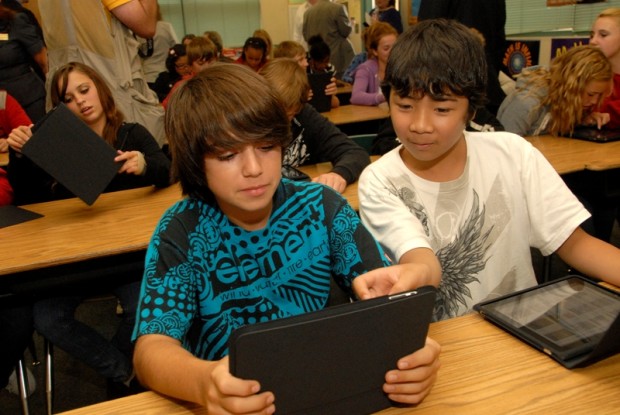It's easy to figure out why a 13-year-old's eyes would light up if you give her an iPad. Think of all the possibilities: YouTube! Movies! Music! Angry Birds!
But what about algebra? Would she be as excited about learning the quadratic equation just because it's presented on a shiny tablet? Turns out that -- at least for the first few months of the class -- it does significantly boost the kid's interest in the subject.
One of the country's biggest textbook publishers, Houghton Mifflin Harcourt is banking on it. In my interview this week with John Sipe, HMH senior vice president and national sales manager, a few theories about the company's Fuse pilot program are coming into focus.
1) Convenience is crucial. A 300-page textbook is replaced by a 10-inch tall, 1.5-pound sleek tablet that features all the same content, plus interactive tests, writing pad, calculator, hundreds of videos, and access to a world of information. "With a textbook, if you want to learn more about one of the examples, you have to stop looking in your book and go online to our website and navigate that particular section and view our video there. Instead, on the iPad, you simply click on 'view video' and up comes our professor, Dr. Edward Burger," Sipe said.


